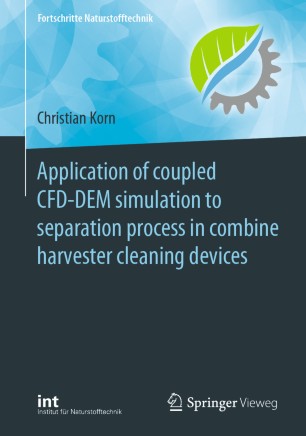

Most ebook files are in PDF format, so you can easily read them using various software such as Foxit Reader or directly on the Google Chrome browser.
Some ebook files are released by publishers in other formats such as .awz, .mobi, .epub, .fb2, etc. You may need to install specific software to read these formats on mobile/PC, such as Calibre.
Please read the tutorial at this link: https://ebookbell.com/faq
We offer FREE conversion to the popular formats you request; however, this may take some time. Therefore, right after payment, please email us, and we will try to provide the service as quickly as possible.
For some exceptional file formats or broken links (if any), please refrain from opening any disputes. Instead, email us first, and we will try to assist within a maximum of 6 hours.
EbookBell Team

4.8
14 reviewsThis book discusses the application of the coupled CFD-DEM approach for simulating the separation of grain and material other than grain in combine harvester cleaning devices. Based on a literature study, it describes the most important influencing factors and presents a database for particle parameterization. It investigates the separation process in two steps with differing levels of process abstraction. The first step involves numerical separation in a vertically oscillating box with airflow, and in the context of a sensitivity study, investigates the effect of selected material, contact and operating parameters on the target variables’ separation time and grain purity. In the second step, the numerical separation process was performed in a 200 mm wide segment of a combine harvester cleaning device. The numerical results were then compared with experimental investigations in order to confirm the method’s applicability.